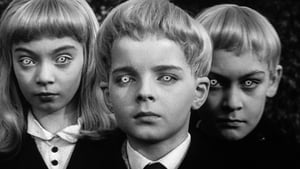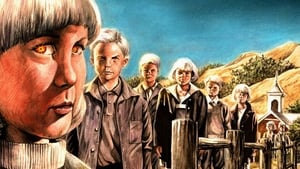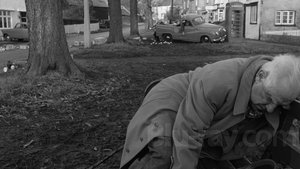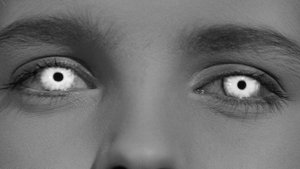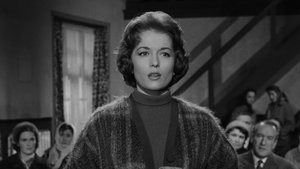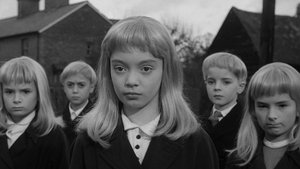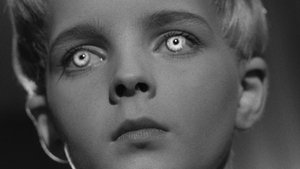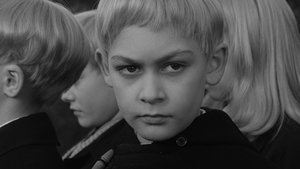Video Sources 0 Views
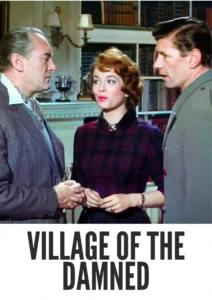
Download Village of the Damned (1960) Colorized HD | George Sanders | Sci-Fi Horror Suspense Classic
Synopsis
Alien Intrigue in the English Countryside: Village of the Damned (1960) Colorized

Journey into the heart of rural England with “Village of the Damned,” a masterful blend of science fiction and horror from 1960, now available in a stunning colorized HD edition. Directed by Wolf Rilla and adapted from John Wyndham’s novel “The Midwich Cuckoos,” this film stands as a timeless parable of paranoia, conformity, and the unknown. The colorized release breathes new life into the film’s eerie atmosphere, making the mysterious events in the village of Midwich more vivid and unsettling than ever before.
Village of the Damned Storyline: A Village Under Siege
The peaceful English village of Midwich is suddenly and inexplicably struck by a mysterious phenomenon: every resident, animal, and visitor within its borders falls into a deep, simultaneous unconsciousness. The military quickly establishes a cordon, baffled by the invisible force that renders anyone who enters the village unconscious. After several hours, the entire population wakes up, seemingly unharmed.
But the true horror begins two months later, when every woman and girl of child-bearing age in Midwich discovers she is pregnant. The pregnancies are as inexplicable as the blackout, and the children are born on the same day, each possessing unnaturally rapid development, platinum blond hair, and piercing, arresting eyes. As they grow, it becomes clear that these children are not ordinary—they share a telepathic bond, communicate without words, and display chilling powers that can manipulate and destroy.
Professor Gordon Zellaby, played by George Sanders, becomes the reluctant guardian and investigator of these children, seeking to understand their origins and intentions. As the children’s abilities become more dangerous, the village is gripped by fear, suspicion, and moral crisis. The film builds to a tense and unforgettable climax, as Zellaby must decide how to confront the existential threat posed by these seemingly innocent yet terrifying beings.
Cast and Characters
“Village of the Damned” features a distinguished cast that brings depth and credibility to its unsettling premise:
-
George Sanders as Professor Gordon Zellaby
-
Barbara Shelley as Anthea Zellaby
-
Martin Stephens as David Zellaby
-
Michael Gwynn as Major Alan Bernard
-
Laurence Naismith as Doctor Willers
-
Richard Warner as Mr. Harrington
-
Jenny Laird as Mrs. Harrington
-
Sarah Long as Evelyn Harrington
The performances of George Sanders and Barbara Shelley anchor the film, with Sanders delivering a rare sympathetic role as the thoughtful, tormented Zellaby, and Shelley providing a grounded, emotional counterpoint as his wife.
Genre and Style
“Village of the Damned” is a defining entry in the science fiction horror genre, expertly blending suspense, psychological drama, and speculative fiction. Its restrained, unnerving atmosphere and focus on scientific investigation set it apart from more sensationalist horror films of its era. The film’s slow-burn tension, chilling visual effects, and haunting score by Ron Goodwin contribute to its status as a classic of British cinema.
Production and Colorization
Originally shot in black and white, this colorized edition of “Village of the Damned” uses advanced digital techniques to enhance the film’s visual impact. The colorization process carefully preserves the original cinematography by Geoffrey Faithfull, highlighting the contrast between the idyllic English countryside and the supernatural menace at its heart. Special attention has been given to the children’s iconic appearance—their platinum blond hair and glowing eyes are now even more striking in color.
The film was produced by Metro-Goldwyn-Mayer and shot on location in Letchmore Heath, lending authenticity to its rural setting. The practical effects, including the children’s unnerving eyes, were achieved with innovative techniques that remain effective to this day.
Reception and Legacy
Upon its release, “Village of the Damned” was hailed as one of the most intelligent and suspenseful science fiction films of its time. Critics praised its atmosphere, performances, and thought-provoking themes. The film’s influence can be seen in later works exploring alien invasion, mind control, and the fear of the unknown.
“Village of the Damned” was successful enough to inspire a sequel, “Children of the Damned” (1964), and a 1995 remake directed by John Carpenter. The original remains the definitive adaptation, celebrated for its subtlety and psychological depth.
Technical Details
-
Director: Wolf Rilla
-
Screenplay: Stirling Silliphant, Wolf Rilla, Ronald Kinnoch
-
Based on: “The Midwich Cuckoos” by John Wyndham
-
Cinematography: Geoffrey Faithfull
-
Music: Ron Goodwin
-
Editing: Gordon Hales
-
Production Company: Metro-Goldwyn-Mayer
-
Runtime: 77–78 minutes
-
Aspect Ratio: 1.85:1
-
Sound: Mono (Westrex Recording System)
-
Download Format: MP4, HD (1080p)
-
Device Compatibility: Smartphones, tablets, computers, smart TVs
Why Download the Colorized Version?
The colorized HD edition of “Village of the Damned” offers a fresh perspective on a genre classic, enhancing the film’s visual storytelling while preserving its eerie, suspenseful mood. The new color palette brings out the details of the village, the chilling expressions of the children, and the stark contrast between normalcy and horror.
Frequently Asked Questions
Q: Is this version of “Village of the Damned” colorized?
A: Yes, this edition is professionally colorized to enhance the visual experience while respecting the film’s original style.
Q: What makes “Village of the Damned” a classic?
A: Its intelligent script, atmospheric direction, and chilling performances have made it a staple of science fiction and horror cinema.
Q: Are there sequels or remakes?
A: Yes, the film was followed by “Children of the Damned” (1964) and remade as “Village of the Damned” (1995).
Q: What is the central theme of the film?
A: The film explores themes of alien intrusion, conformity, the dangers of unchecked power, and the fragility of human society.
Download Now in HD!
Experience the suspense and terror of “Village of the Damned” (1960) like never before—download the colorized HD version today!

